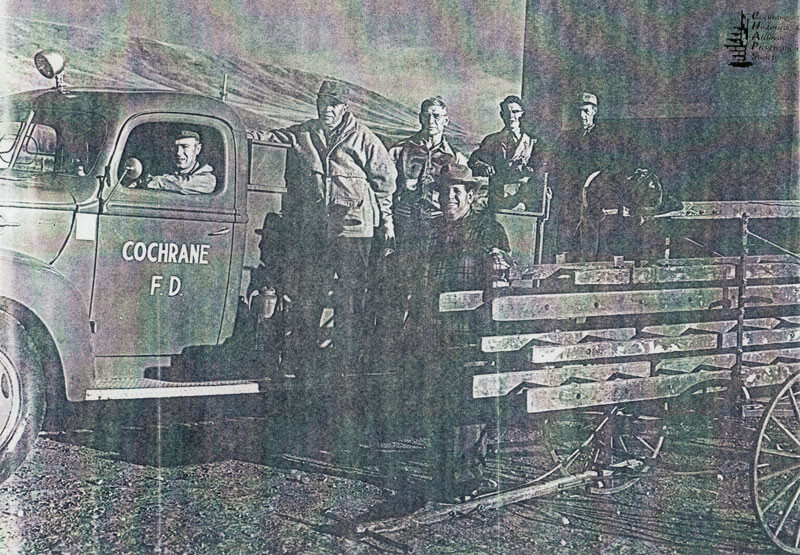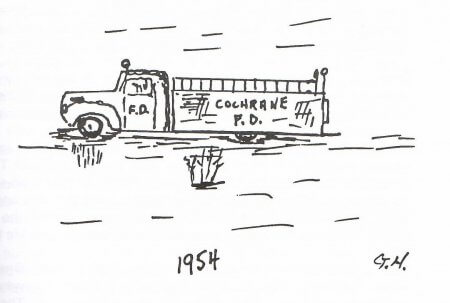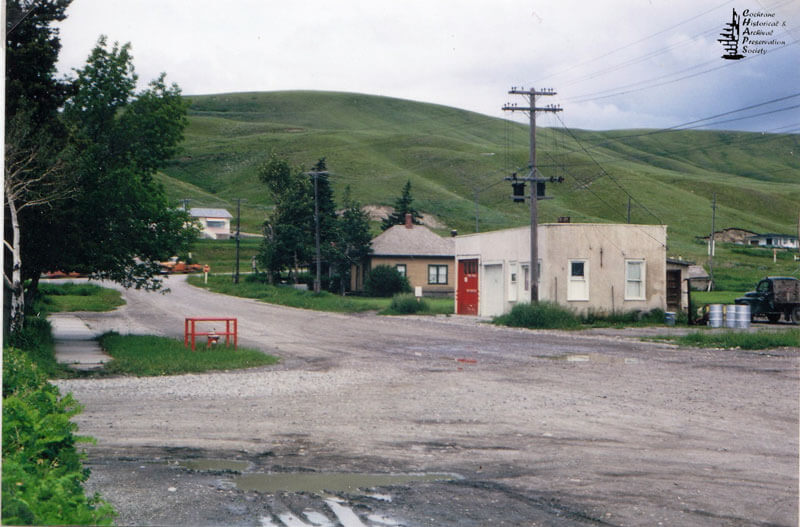By Allan and Belle Hall
In firefighting, water is always the main item so in the early 1950s the council, headed by Mayor Barney Klassen decided we were going to have a water system and made plans accordingly. I was offered the job as fire chief, and I was to go to #1 fire hall in Calgary for a week’s training in an instructor’s course. Passing with a mark of 86 percent and returning home, I got together a brigade and we held lectures all summer. The Calgary course was in May 1954, and the council didn’t purchase a rig until September of the same year.
For the council, water was a big problem. They drilled three wells in the coulee as you start up the Big Hill, on the north side of the road. The council put in a 60,000-gallon storage tank. The wells were entirely inadequate and soon went dry and this upset the ordinary wells that were in the east end of town.
As diesel engines on the CPR line didn’t require water, the council made arrangements to use the CPR four-inch line that ran from the CPR station east along the tracks to a point in the river, just north of Griffins farm. This set-up worked fine for a while, but soon the old line fell apart. The pressure of water was too much for it. The next step was a new line south from town to the river, which is used today. Seven hydrants were installed, mostly near the business section of town.
The next thing was how to alert the brigade. In the early days, church bells or phones were used. The alarm issue was solved when we approached the phone office staff. They had a list of phone numbers of firemen and when an alarm was phoned in, the two operators phoned firemen immediately. This alarm system worked well for a number of years until the phone office was done away with. We then went to an electric sentry machine located in the Firehall. When an alarm was phoned in, the machine activated the siren. The first man there tore the tape off the machine which gave the location of fire etcetera. This didn’t work because kids and drunks thought it was a big joke to phone in an alarm and we were chasing false alarms. The next step was to put five phones in various members’ homes. These phones were just for fire and rang only when the fire number was dialled.
After we had our engine for a while, Alan MacDonald and I decided we would see how well the brigade would act if we were not there. As there was no more use for outside toilets, we asked the council if we could have the big old double toilet that sat behind the community hall. Sure, they said get rid of it. Undercover of darkness and with the aid of a tow truck, we placed it northwest of the Rebekah Hall about where Dr. Kelly’s office is now. Filling the interior with about 20 old car tires with about five gallons of used car oil, topped off with a couple of gallons of gas.
As I worked at the Texaco garage, we set our watches and 10 p.m. sharp 1 was to turn in the alarm from the garage and Alan would light the fire. The night was very dark and everything went as planned. What we didn’t plan on was the reaction of the local residents. The fire flared up quickly, causing a huge glow as gas and oil went heavenward. The brigade acted promptly and had the fire out in 10 minutes flat. However, Ernie Andison, the butcher, had run all the way from his place, half-dressed. When he found out what had happened, he lit into me. “A scatterbrained lunatic” and a few more choice words that must have blistered the paint on the house nearby. A few more of the residents were upset and we were not too popular.
From a Peep into the Past Volume 1 by Gordon and Belle Hall




This is a treat! Love stories of past times!